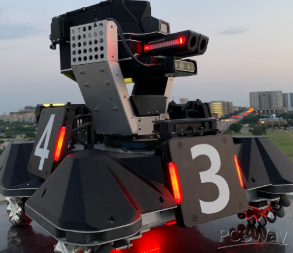

Texas A&M Aimbots
What is Robomaster?
Robomaster is a competition where various types of robots face off against eachother in a field. The robots can shoot at eachother to deplete the each other's health and eventually eliminate them. The win condition of a match depends on its type, with it possibly being to eliminate every other enemy robot or deal enough damage to the enemy's base. The event has an international presence, with numerous international teams, including us, travelling to China to compete, and the competition matches being broadcast to millions of viewers yearly. The competition has also led to the creation of a similar, American competition called ARC.
Who are we?
The Aimbots were formed in 2018 at Texas A&M with one goal in mind: to create the fastest, strongest, and highest-performing robots for the Robomaster competition in China and the American ARC robotics competition. Since its creation, our team has been hard at work developing mechanical systems, algorithms, and electrical devices to build and enhance our robots, some of which are:
Standard
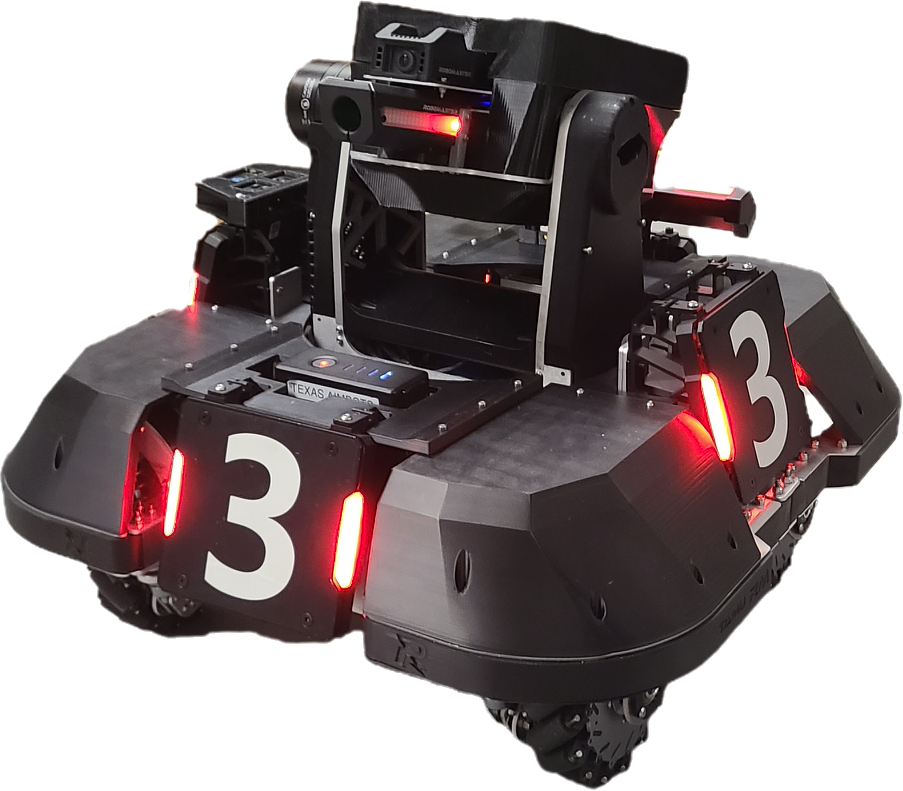
The Standard is the light infantry of the team, zipping around the field and dealing damage to enemies with its turret.
Sentry
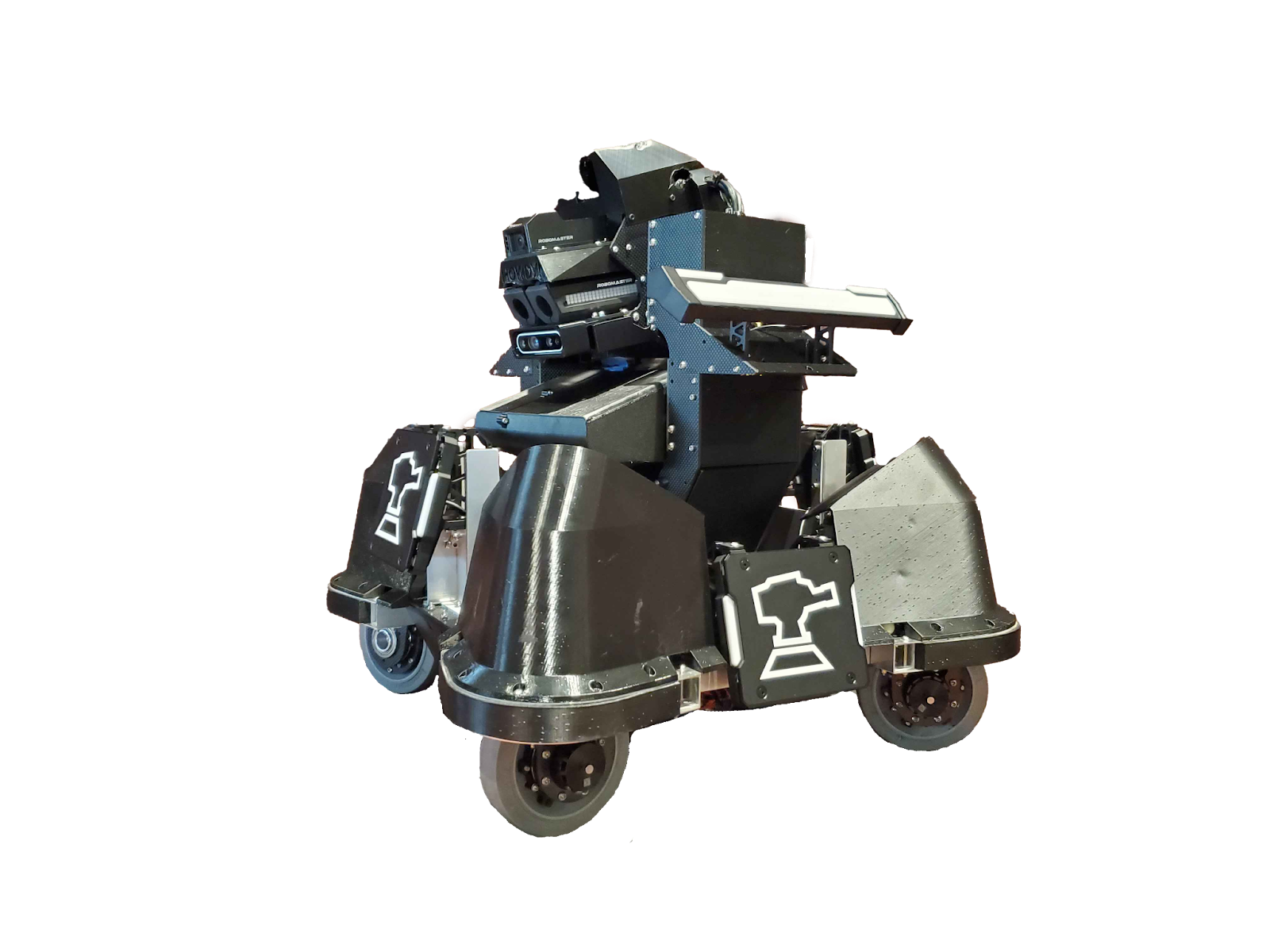
The Sentry is a fully autonomous robot, which defends the team's base with its computer vision-based enemy tracking and twin barrels.
Aerial
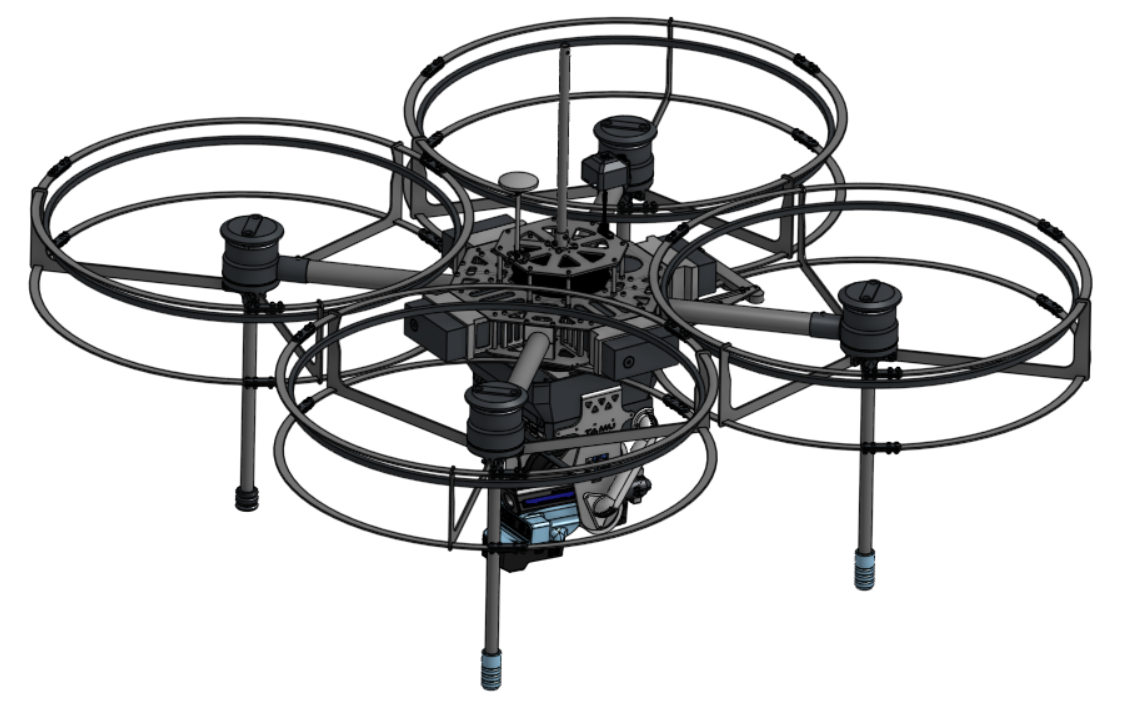
The Aerial is a unique, powerful robot that can take flight and target enemies below with its bottom-mounted turret.
Our robot's designs are proven, with us placing 3rd at the 7 vs. 7 event in China, and placing on the podium numerous times for the 3 vs. 3 and 1 vs. 1 events during the ARC competition. In the future, we hope to carry the momentum forward and upgrade our robots so that we can do even better during the competition season.
Ongoing Projects
Currrently, our team is focused on iterating upon our previous designs and improving them to ensure our robots are as competitive as possible for the upcoming season. To that end, our electrical team has been researching and developing various electronic devices to upgrade our robots' functionalities. Many of these devices, due to their unique requirements, make extensive use of PCBs to bring them to life. Some of them are:
1.Supercapacitor System
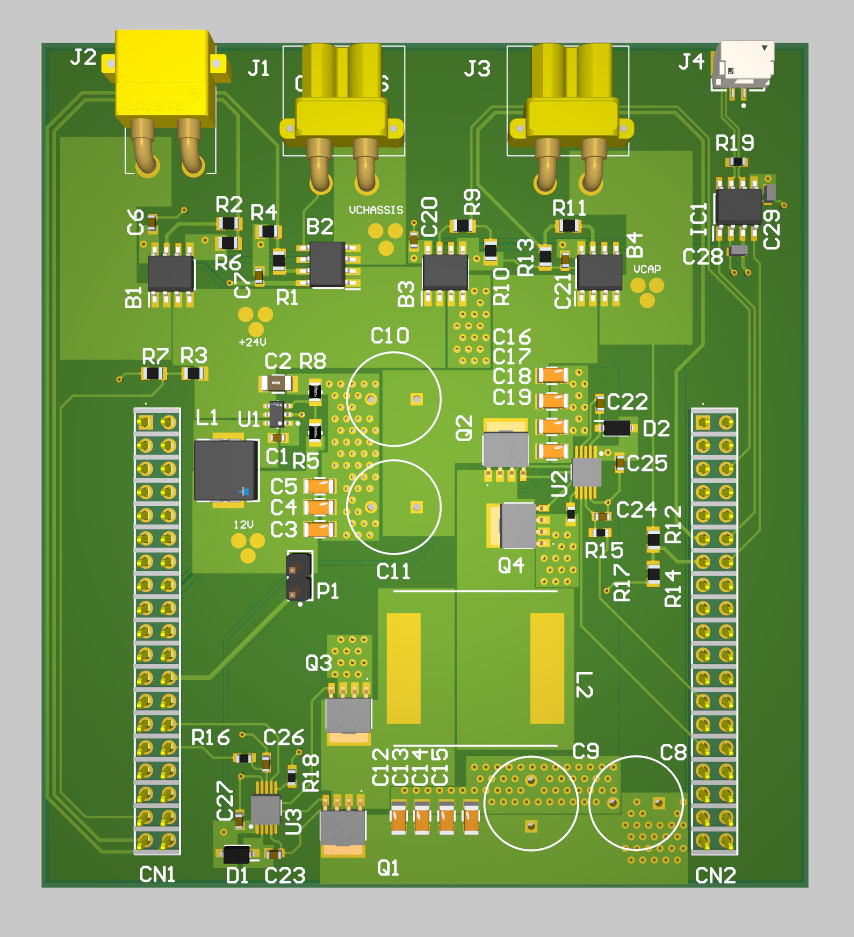
While our robots are fast, their speed is still neck and neck with the competition. They need something that can provide an extra boost to their speed to outpace the enemy robots so that they can stay one step ahead, whether it be in defending the base or hunting them down on the field. For that reason, the supercapacitor system is being developed, which will store excess energy inside a supercapacitor bank with a capacity of several thousand joules, and release it on-demand to give our robots a significant speed boost for a short time. The board monitors the transfer of power to and from the robots and the supercapacitor bank through on-board power monitoring, and facilitates the transfer of power through a set of MOSFETs configured in an H-bridge. During charging/discharging, the current going through the board may be in excess of 15 Amperes, and supercapacitors are a danger when overcharged, so great care was taken in its design.
2.Power Sensor
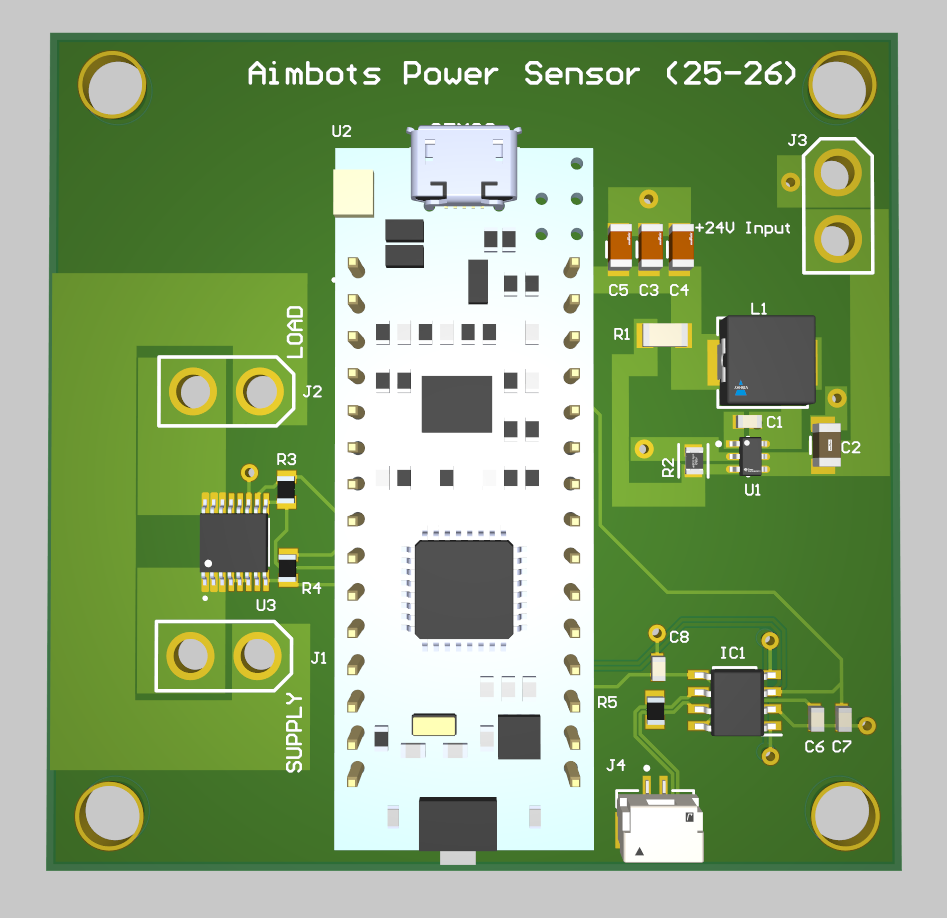
In the competition, there are significant restrictions related to power draw. Drawing too much power from the battery at once causes the robot to shut down, which is highly unfavorable during a competitive match. So far, our power draw was estimated through software by monitoring how much the motors were being used, but we would like to have a more direct solution to the problem. Thus, we have been developing a power sensor PCB that can measure the power being drawn by the robot and relay that information to the on-board computer using CAN, a highly robust serial communication protocol.
3.Power Bypass Module
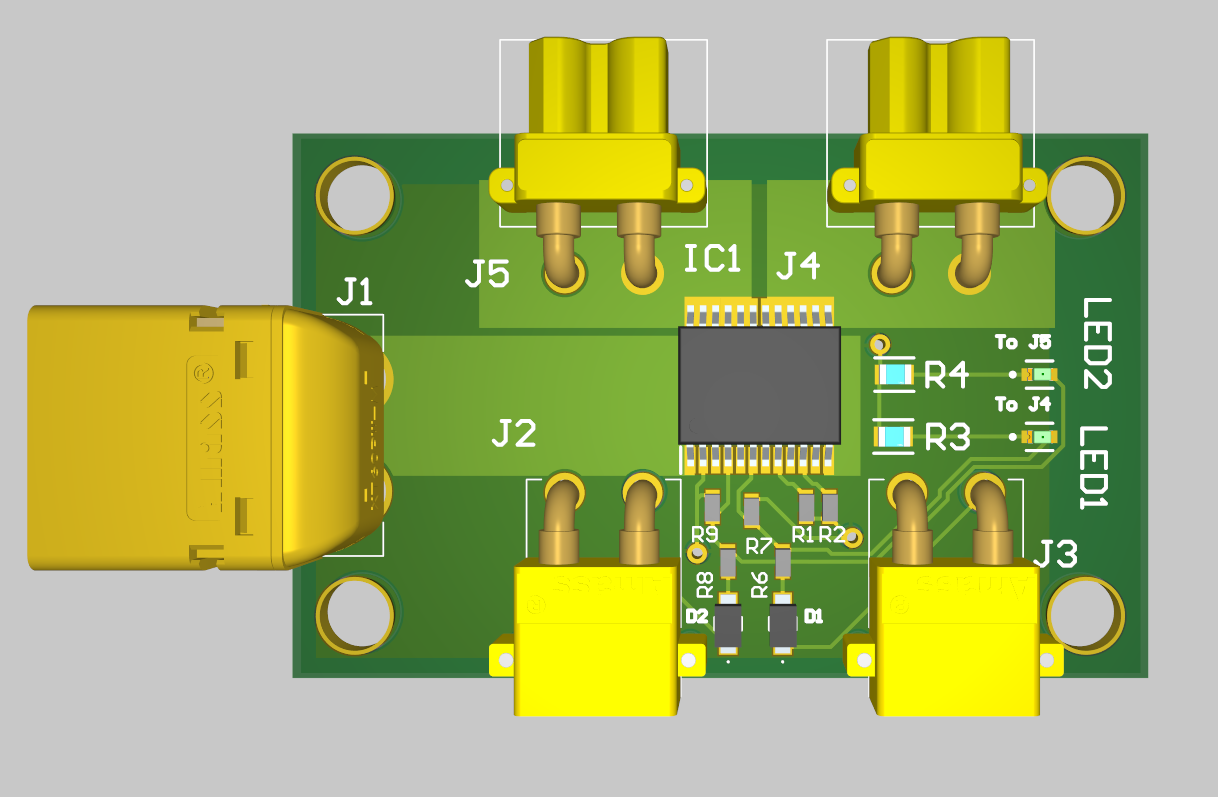
As mentioned previously, one of our robots, sentry, is fully autonomous. Its enemy tracking capabilities are provided by a Jetson, which draws a lot of power and can adversely affect sentry's performance in other areas, given the power limitation. To address this issue, we have made a bypass module that makes powering the Jetson possible without further restricting power draw.
4.Breakout Boards
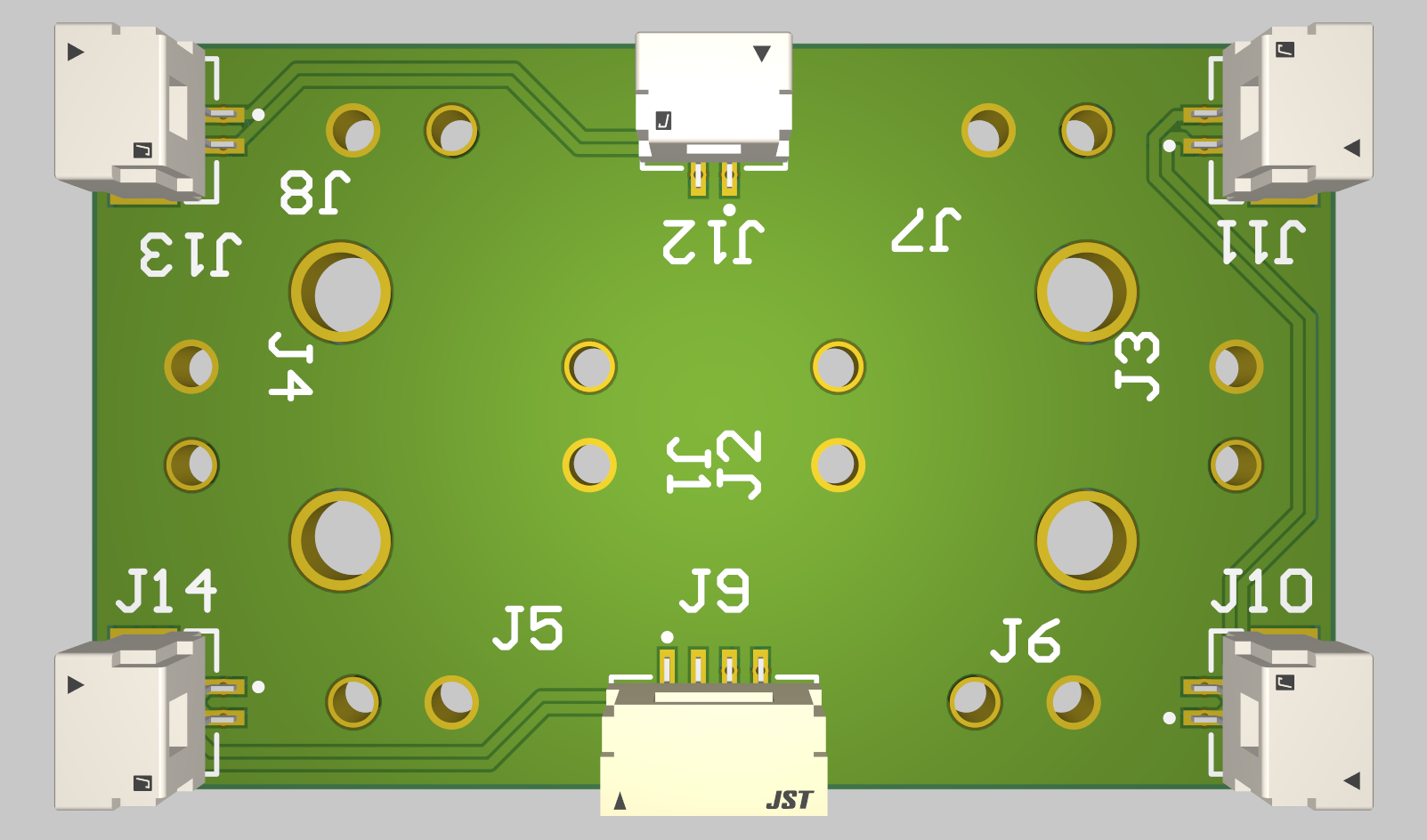
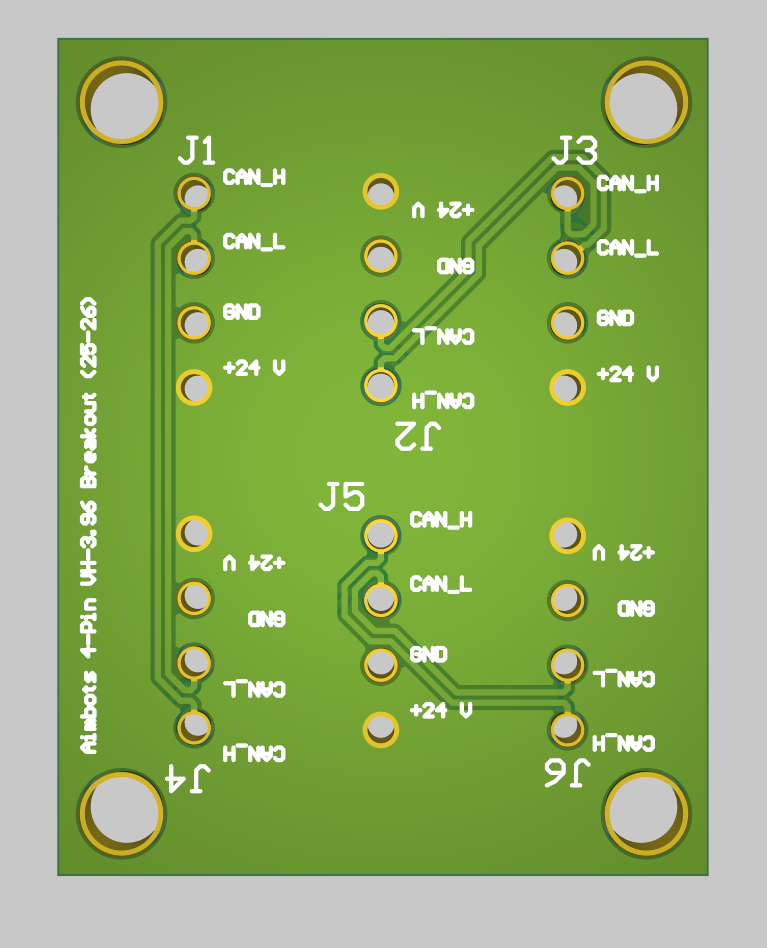
Wiring is a significant issue that is worthy of attention. Bad wiring can mechanically restrict our robots' movements and even cause electrical problems like shorts, etc. Our solution to this in the past was to manage wiring through breakout boards, but the connectors used then, XT30 connectors, would fall out too easily. We have thus redesigned the breakout boards to use VH-3.96 connectors, which will provide the same benefits while staying in place.
While we are working on many projects to enhance our robots, we still have more improvements planned for the future, including custom devboards to increase the amount of peripherals we can connect to the robots, and electornics for homing darts to improve the accuracy of our Dart robot, which fires projectiles into the air to directly attack the base. Needless to say, our team is excited to develop the electronics that will enhance our robots even further.
Closing
Our extensive use of PCBs means that having a sponsorship from a major manufacturer like PCBWay will accelerate our development processes and push the quality of our projects to greater heights. With the bright, passionate engineers on our team and the support of outstanding manufacturers like PCBWay, our technical achievements will have no bound. Thank you for your time and consideration.
- Drone
- Embedded Systems
- Power Electronics
- Competition
- University
- Robotics
- Robomaster
You might like
- Comments(0)
- Likes(0)
